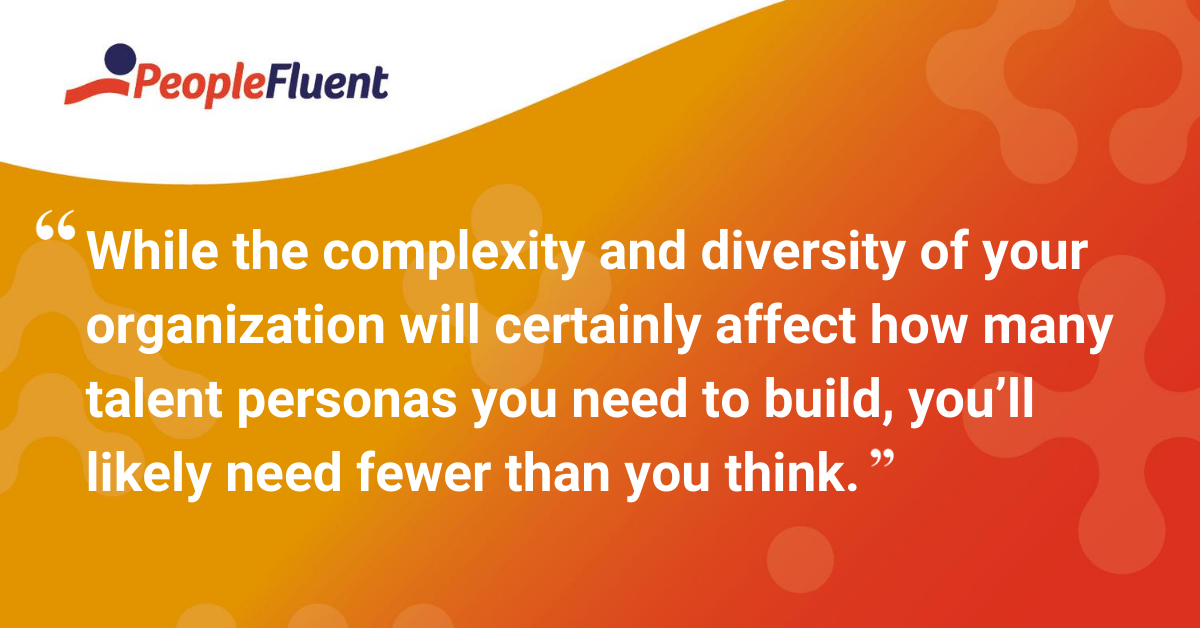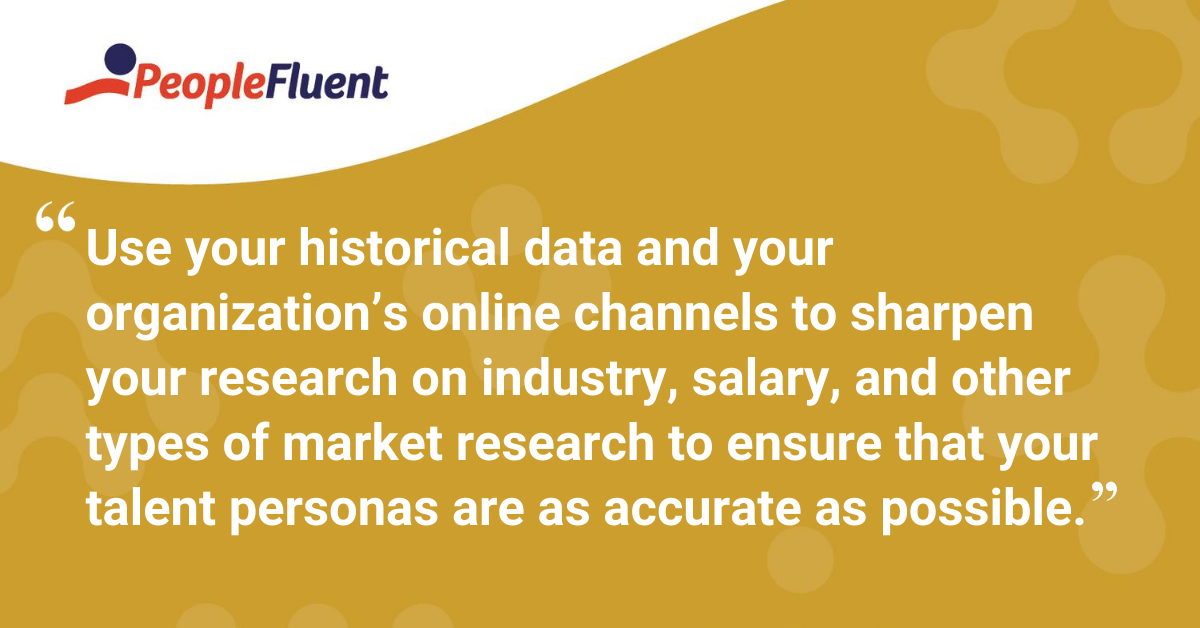Published: Feb 12, 2020Time to read: 4mins Category: Insights
How To Create the Right Talent Personas for Your Recruiting Strategy
Table of Contents
Successful recruiters live and die by how efficiently they can source and attract the right people for their organization. Everyone is looking for the next tool or trick that can help them accomplish this goal. More and more, savvy recruiters are turning to talent personas to help them create "molds". These molds tend to create successful employees and apply them to candidates to increase their chances at success.
Talent personas are data-driven aggregate models of employee profiles. These profiles allow you to target specific skills and attributes that your hiring organization values, and recruit to scale for your organization. Think of talent personas as recruiting’s version of customer profiles.
So how do you build one? Here are four ways to get started.
1. Decide How Many Talent Personas Your Organization Needs
While the complexity and diversity of your organization will certainly affect how many talent personas you need to build, you’ll likely need fewer than you think. Think about what skillsets or attributes are needed for specific roles, and which traits are valued universally across your organization’s workforce. You might be surprised at how similar your talent personas will be for different roles. In other words, you might be able to reduce the number of personas you have to build.

Keep reading: 'How to Choose the Right Applicant Tracking System for Your Organization'
2. Compare Your Organization’s Processes To the Market
Examine your organization’s internal workflows and functions, and compare them to your market perception and your goals. You’ll build each persona by using multiple internal and external data sources. These are compiled into a matrix and are all aligned to your company growth plans. The matrix is comprised of:
- desired skills
- trends in “ideal” employee behaviors and attributes
- and market research
Understanding what traits to look for when filling specific roles will help you better create and market to talent pools of pre-vetted candidates for faster review. Plus, faster—and hopefully more successful—hiring.

More from the blog: 'Increase Hiring Efficiency With These 4 Best Practices'
3. Flesh Out Your Personas with HR Data
Your organization’s historical hiring and employee data will be greatly beneficial to you when creating more robust talent personas. Hiring success, employee performance, development, and turnover are all great data points to use when building talent personas.
Additionally, use your historical data and your organization’s online channels to sharpen your research on industry, salary, and other types of market research to ensure that your talent personas are as accurate as possible. A powerful talent acquisition solution will be needed to capture and integrate all the data points you need, so make sure your technology partner can handle your data and recruiting needs.
Handpicked for you: '5 Steps to Transform Your Talent Pipeline'
4. Deploy Your Talent Personas Strategically
Now that you have a better understanding of what your organization’s best candidates look and act like, use that information to better source talented individuals. Your personas should be able to tell you the places where candidates who match that description are more likely to spend their time, conduct career research, and consume industry news.
Furthermore, personas should help you develop a strategic outreach plan that better connects you with these candidates, and entices candidate interest back in your organization.

Building a Holistic Recruiting Strategy
Talent personas are just one tool in your recruiting toolkit.
Also make sure you have the right talent acquisition partner to maximize your effectiveness as well. To learn more about talent personas for your recruiting strategy, download a copy of our short insight '6 Strategies for Attracting Top Talent'
Align your talent strategy with the future of recruiting
Learn more about how PeopleFluent Recruiting can help your company plan and deploy successful recruiting strategies.